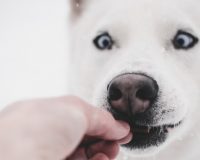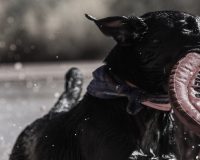When pups show consistent signs of stress, intolerance, growling, or air snapping toward a perceived threat, remove the dog from the trigger immediately and consider the situation. Experienced pup parents see the cues and may have the skills to manage and train. However, inexperienced parents must pursue help at this juncture to learn the management and training techniques that will prevent a serious incident, next time the dog is in that situation. This will prevent the dog bite that is on the horizon.
One-on-one time with a Certified Trainer will bring a world of insight and effective techniques to pet parents to manage their unique situation.
My Dog Bit | Now What?
An injuring dog’s parent is required to pay the vet bill, by law. A bite puts a dog and his parent on a trajectory where intervention is a distinct advantage. By contrast, non-intervention is a distinct disadvantage. Now is the time to engage a Certified Trainer, understand the issue and consider one’s legal responsibilities.
We recommend that an injuring dog be kept away from triggers, and get assessment, advice and a treatment plan from a Certified Trainer. This protects you, your pup and others by reducing liability and the repercussions that will be levied against you and the dog, should another bite occur.
Training and the Bite Scale
When evaluating what happened, your Trainer will consult the Bite Scale used by the Industry and Government and advise where your dog fits in. This provides the framework to categorize the bite severity and it informs much of what follows next. Mitigating circumstances, like mental and physical health, environment, breed attributes, history, the trigger(s) and training-to-date are considered. However response to triggers, stress, fear, aggression and bite inhibition (or lack thereof) are issues a Trainer will evaluate and treat, among others.
What if I Do Nothing?
Canadian law is clear on negligence: if a bite happens once, it is foreseeable that it will happen twice. Doing nothing will eventually bring stiff, heartbreaking penalties for the parent and the dog.
Veterinarian and human doctors are required to report dog bites to Public Health and a bite history is recorded. In severe cases (bite level 4 and 5), a muzzle order will be issued, the dog may be deemed a Dangerous Dog, the parent will be ordered by law to hire a Behaviourist and a Trainer, the dog may be placed on house arrest, and he will get only two more chances, sadly. This trajectory is awful for dogs. For humans, it’s a punitive acknowledgment that the situation wasn’t handled properly, earlier on. It’s awful, again, because it is incredibly restrictive and expensive.
Play it safe: take the position that early intervention is the lesser of all evils. It is, actually. A Certified Trainer will bring insight, teach skills, and help you attain results and freedom, by contrast.
It ‘Aint All Bad | Silver Linings
Every dog is different and doesn’t have to like all other people and dogs, or thrive in all situations, including leash-free. See the signs early on and get help—engage a Certified Trainer.
Until the issue is treated and the pup is 100% trustworthy again, he should not be placed in a situation where another bite could occur. Some pups never achieve that clearing and that is a-ok! Stick to what works well for the dog, so he thrives.
That is a happy place to be. There is so much more to life that he can enjoy and get stimulation from.















